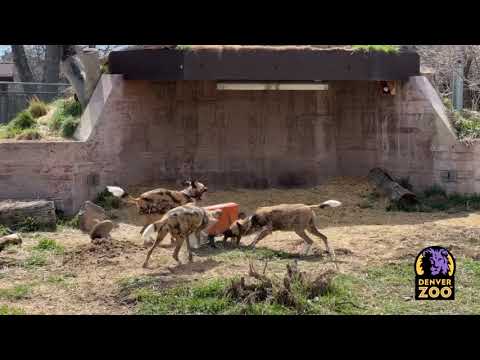- The importance of environmental enrichment for African wild dogs in captivity
- Types of enrichment strategies to stimulate African wild dogs’ natural behaviors
- The role of enrichment in physical health and psychological well-being of African wild dogs
- Monitoring and assessing the effectiveness of enrichment programs
- The connection between enrichment in zoos and wildlife conservation efforts
Recognized for their distinctive mottled coats, remarkable social structures, and agile hunting techniques, African wild dogs are a species of considerable interest in zoological parks and wildlife conservation areas. This carnivorous canid, also known as the painted dog or cape hunting dog, is native to sub-Saharan Africa and has faced several threats that have led to a drastic reduction in their numbers. With less than 7,000 individuals estimated to be in the wild, captive populations in zoos play an essential part in conservation and education efforts. African wild dog enrichment is a critical component of maintaining these animals’ well-being in captivity and profoundly impacts their physical and mental health.
Wild dogs are known for their vast territories and complex social interactions. Providing a varied and species-specific environment that stimulates their natural behaviors in captivity is challenging but vital. A dynamic enrichment program that caters to the diverse needs of African wild dogs is important. It includes sensory, nutritional, physical, cognitive, and social aspects, each aiming to evoke the wild dogs’ instinctual responses and promote a full range of natural behaviors.
Keepers may introduce novel scents or sounds into the dogs’ environment for sensory stimulation. Scents from prey animals or pheromones that trigger specific reactions can encourage sniffing, tracking, and other investigation behaviors, while recorded sounds of their natural habitat might prompt alertness or curiosity. Nutritional enrichment typically involves altering how wild dogs receive food, promoting natural foraging and hunting behaviors. Tactics like scatter feeding, hiding food, or using puzzle feeders make mealtimes both mentally and physically stimulating.
Physically, African wild dogs benefit from environments that allow for ample movement. This can include spacious enclosures with complex landscapes featuring hills, dips, and vegetation, encouraging exploration and play. Additionally, African wild dogs are highly intelligent animals, necessitating cognitive challenges that can be met through training sessions that strengthen bonds between animals and their caregivers and provide mental stimulation.
Social interaction is paramount for African wild dogs, whose pack dynamics in the wild involve complex communication and cooperative efforts. In captivity, this aspect of enrichment often involves group housing. Still, care must be taken to manage the introduction of individuals and monitor social dynamics closely to prevent stress and ensure compatibility.
Monitoring and evaluation are intrinsic to African wild dog enrichment. By conducting regular observations and utilizing behavior-tracking apps or software, handlers can gauge the effectiveness of enrichment strategies and fine-tune them to individual animals’ preferences and needs. Adjustments can vary from changing feeding schedules to modifying structures within the enclosure. This iterative process contributes to a highly effective enrichment program that encourages behaviors exhibited in a natural setting.
Lastly, the effort to enrich the lives of African wild dogs in captivity is intertwined with broader wildlife conservation strategies. Not only does enrichment contribute to the physical health and reproductive success of individuals within the population, but it also aids in educating and public awareness of the species. Educational programs demonstrating active enrichment procedures can inspire visitors to support conservation efforts. Furthermore, zoos play a critical role in maintaining genetic diversity. They may participate in coordinated breeding programs, aiming to potentially reintroduce animals into protected areas in the wild.
African wild dog enrichment goes beyond mere amusement; it plays a pivotal role in replicating the complexity of the species’ natural behavior and environment. In the critical effort to safeguard the future of African wild dogs, providing dynamic, thoughtfully crafted enrichment in captivity is a cornerstone of their physical and psychological welfare. Effective enrichment practices are evidence of zoos’ commitment to animal care standards and their broader role as conservation stewards. By fostering an environment where African wild dogs can exhibit an extensive range of natural behaviors, such enrichment programs are vital for ensuring the vitality of this incredible species both in captivity and in the wider context of conservation.
*****
Source Description
Our African wild dogs recently enjoyed immersive enrichment activities! Volunteers created paper mache replicas of a red river hog and ostrich chick, filled with pig and ostrich meat. Additionally, hay from our red river hog habitat and feathers from our ostrich, Dusty, were placed throughout the habitat for scent enrichment. Watch the video captured by our Animal Care Specialists Caitlin J. and Jordan S. to see these predators in action! #AfricanWildDogs #Denver Zoo

